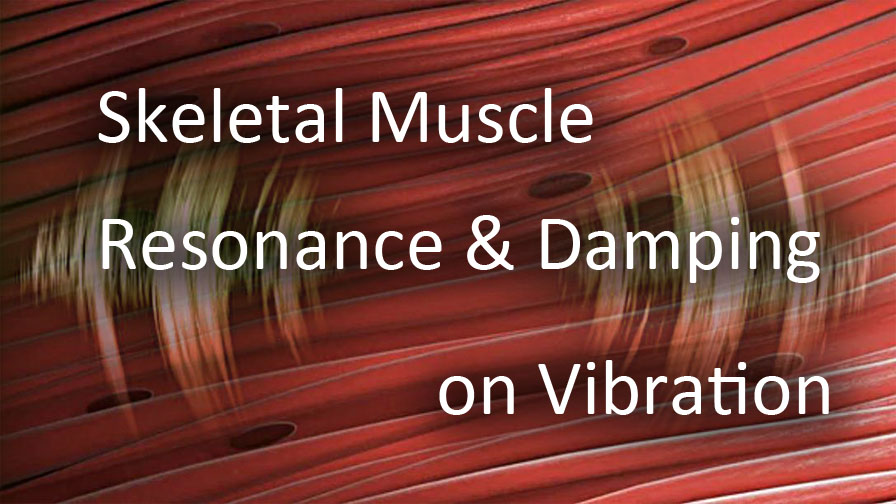
Skeletal Muscle Resonance & Damping in Vibration
Vibration therapy is about using vibration to induce rapidly repeated skeletal muscle contraction. The mechanical stimulation produced by muscle contraction is the needed treatment intervention.
When the frequency of a vibration plate equals the natural frequency of the user's body tissue, vibration is most effectively transmitted from the vibration plate to the body tissue. This maximized vibration transmission effect is called resonance effect.
How does resonance effect influence our body and tissues? How to achieve resonance?
- What is resonance frequency?
- Resonance frequency of human body
- Resonance frequency of soft tissues
- Resonance frequency of muscle
- Skeletal muscle damping effect
- Different vibration frequency influences body and tissues differently.
- Pivotal oscillation plate vs linear vibration plate
What is resonance frequency?
When vibration is transmitted from source to recipient object, at a certain input vibration frequency, the recipient object can achieve the highest responding vibration amplitude. This phenomenon is called resonance. The frequency at which the resonance happens is called resonance frequency of the object. It is also called the natural frequency of the project.
The resonance frequency of an object is decided by its mass and rigidity. A light and rigid object has a higher resonance frequency. A heavy and flexible object has a lower resonance frequency.
Resonance Frequency of Human Body
Human body, as a whole object, has a big mass and is flexible. Therefore, the whole body has a lower natural frequency between 5Hz to 10Hz, depending on the body weight and the rigidity.
The rigidity of the body is also affected by body posture and vibration direction. If you tense your body on a certain direction, your natural frequency increase in that direction. If you relax, your natural frequency decrease. To a certain extent, you decide your body's resonance frequency!
Resonance Frequency of Soft Tissues
Compared to the whole body, soft tissues are smaller in mass and also flexible. Their natural frequencies are higher, in a range between 10Hz and 50 Hz, depending on what type of tissue.
Resonance Frequency of Skeletal Muscle
Skeletal muscles are special soft tissues in term of their resonance frequency.
When a skeletal muscle tissue is in relax state, it has a certain resonance frequency. However, when the same muscle tissue contracts, the contraction raises the rigidity of the muscle and increases its resonance frequency.
In relax state, skeletal muscle’s resonance frequency is around 10Hz. In contraction state, the resonance frequency can achieve around 50Hz.
When vibrated, due to its natural stretch reflex response, skeletal muscles respond with contraction and therefore increase their resonance frequency.
Naturally, skeletal muscles tend to hold their muscle length. If stretched, skeletal muscles spontaneously contract. This is called skeletal muscle’s stretch reflex response.
Skeletal Muscle Damping Effect
Because of the stretch reflex response, skeletal muscles tend to contract against the vibration movement. At a certain frequency range, skeletal muscles always poise to keep their resonance frequency higher than the input frequency from the source, staying out of resonance state, lowing the amplitude. This is the damping effect that muscles react against the vibration.
Skeletal muscle’s reaction against resonance engages the muscles to work hard involuntarily – intensive muscle contraction.
Different vibration frequency influences body and tissues differently
Whole Body Resonance
Whole body as an object has the resonance frequency range between 5Hz and 10Hz. A pivotal oscillation plate (usually run below 15Hz) can achieve resonance on the whole body. In other words, pivotal oscillation plate can shake the body high.
Although it can shake the body vigorously, the low frequency vibration does not induce much muscle contraction. The muscles swing wide but not tense.
Soft Tissue Resonance
Soft tissues’ resonance frequency ranges between 10Hz and 50Hz. A linear vibration plate (usually run between 15Hz and 40Hz) can achieve resonance on soft tissues.
However, the damping effect of skeletal muscles tends to keep the muscle out of resonance. Therefore, the linear vibration plate can effectively induce muscle contraction. The muscles appear tense, not swinging much on vibration.
Pivotal Oscillation Plate vs Linear Vibration Plate
Understanding how different vibration frequency influence your body and tissues can help you choose the right vibration plate for your intended purpose.
If you want a vibration plate to shake your whole body vigorously without intensive muscle contraction, you can choose a pivotal oscillation plate which usually run below 15Hz.
If you want a vibration plate to induce rapidly repeated intensive muscle contraction, you can choose a linear vibration plate which usually run from 15Hz to 50Hz.
Reference:
- Muscle activity damps the soft tissue resonance that occurs in response to pulsed and continuous vibrations
- By James M. Wakeling, Benno M. Nigg, and Antra I. Rozitis Journal of Applied Physiology
- Jay Tang
- About
-
Interpreting life science from an engineering perspective.
Featured Posts:
